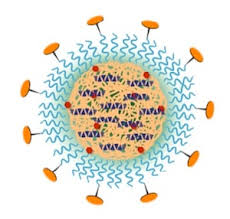روند ناپایداری حرارتی (نانوذرات) در تغییر لیندمان (change structure) ساختار و ساختمان نانو مواد (بر پایه دکترای نانو _ میکرو الکترونیک) دکترای آموزشی _ پژوهشی
پژوهشگر و نویسنده: دکتر ( افشین رشید)
نکته : تمام اتمهای موجود در نانو مواد در هر دمایی مقدار مشخصی از انرژی را به دلیل نوسانهای خود، به خود اختصاص میدهند. میزان دامنه این نوسان در تمام اتمهای نانو ماده یکسان نیست. بلکه اتمهای سطحی به دلیل آزادی فضایی بیشتری که در اختیار دارند، دامنه نوسان بیشتری نیز دارند. به این ترتیب میتوان رفتار عجیب جامدات در کاهش دمای ذوبشان را توضیح داد.
رسیدن مقدار میانگین دامنه ارتعاشات اتمی به ضریب مشخصی از مقدار ثابت شبکه نانو مواد ، این ارتعاشات دیگر نمیتوانند بدون آسیب رساندن و تخریب شبکه نانو ذرات افزایش یابند. بنابراین، با افزایش میانگین دامنه ارتعاشات به مقادیر بیشتر، ماده از قالب شبکه بلوری خارج شده و ذوب میشود. اتمهای سطحی، میانگین نوسانهای بالاتری دارند و اگر تعداد اتمهای سطحی زیاد شود، میتوانند بر میانگین دامنه نوسانهای کل اتمهای ماده تاثیر واضحی بگذارند. بنابراین با کوچک شدن ابعاد ماده تا حدی که نسبت تعداد اتمهای سطح به تعداد اتمهای حجم به مقدار چشمگیری برسد، میانگین دامنه نوسانهای نانو مولکولی افزایش قابل ملاحظه ای خواهد یافت؛ در این شرایط، با افزایش ناپایداری سطحی ماده، دمای ذوب نانو مواد کاهش پیدا خواهد کرد.
در تغییر ساختار نانو مواد از پدیده های حرارتی ناشی از کوچک شدن ساختمان مواد، ناپایداری حرارتی نانوذرات است. همانگونه که میدانید،( گرما دارای انرژی E )است، که 03 - میزان انرژی آن متناسب با دمای محیط است. این انرژی برابر با KBT است. در این رابطه KB ثابت بولترمان و یک مقدار ثابت برابر با و T دما بر حسب کلوین است. بنابراین، وقتی مواد در محیطهای مختلف قرار میگیرند، در اثر گرما به الکترونها انرژی(-0 01*0/33JK)داده میشود. حال یک ویژگی از یک ذره را در نظر بگیرید که به صورت کلی به (حجم نانو ذره V) بستگی دارد. انرژی این ویژگی به صورت U و تابعی از V است. هنگامی که حجم به اندازه کافی کوچک باشد، به طوری که KBT بزرگتر از U باشد، آنگاه شرایط از نظر حرارتی ناپایدار خواهد بود.
نتیجه گیری :
تمام اتمهای موجود در نانو مواد در هر دمایی مقدار مشخصی از انرژی را به دلیل نوسانهای خود، به خود اختصاص میدهند. میزان دامنه این نوسان در تمام اتمهای نانو ماده یکسان نیست. بلکه اتمهای سطحی به دلیل آزادی فضایی بیشتری که در اختیار دارند، دامنه نوسان بیشتری نیز دارند. به این ترتیب میتوان رفتار عجیب جامدات در کاهش دمای ذوبشان را توضیح داد.
پژوهشگر و نویسنده: دکتر ( افشین رشید)
دکترایِ تخصصی نانو _ میکرو الکترونیک




